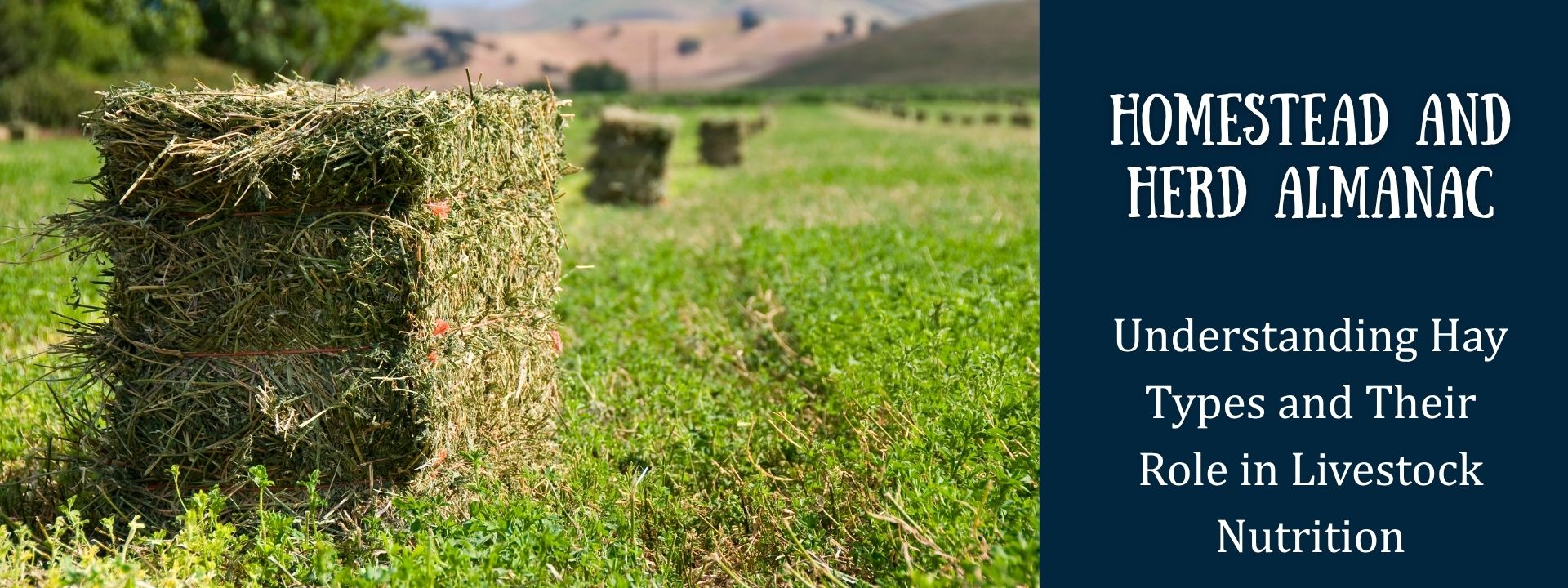
Understanding Hay Types and Their Role in Livestock Nutrition
Choosing the right hay is one of the most important factors in maintaining animal health and performance. Whether you’re feeding horses, cattle, goats, or sheep, hay provides the foundation for energy, protein, and fiber in their diet. Not all hay is created equal – nutrient content, texture, and digestibility can vary widely depending on the plant type, maturity, and growing conditions.
Here’s a detailed look at the different types of hay and how to choose the best one for your animals.
Grass vs Legume Hay
Hay is generally divided into two categories: grass hay and legume hay.
Grass Hay
Common grass hays include Timothy, Orchardgrass, Meadow, Bermuda, Teff, and Coastal Bermuda.
- Lower in protein and calcium (typically around 10%)
- Higher in fiber, which supports healthy digestion
- Excellent for maintaining weight and satisfying appetite without adding unnecessary calories
Grass hays are best suited for adult horses, mature cattle, sheep, and goats that do not have high energy or protein requirements.
Legume Hay
Legume hays – such as alfalfa, clover, birdsfoot trefoil, vetch, soybean, cowpeas – are rich in nutrients and energy.
- Higher in protein and calcium, often doubled or triple the levels found in grass hay
- Higher digestible energy and Vitamin A
- Ideal for growing animals, lactating females, and those needing extra nutrition
Hay Quality and Maturity
The nutritional value of hay depends largely on when it’s harvested.
- Young, leafy hay contains more nutrients and is easier to digest.
- Mature hay becomes stemmy and fibrous, reducing energy and protein content.
In alfalfa, the leaf-to-stem ration is a key indicator of quality:
- First cutting: Often coarser, with more stems and potential weeds.
- Second cutting: Higher leaf content, moderate protein (usually around 16%)
- Third cutting: Fine stems, high leaf content, excellent digestibility.
A simple “snap test” can help evaluate the hay quality. If stems bend easily, the hay is less fibrous and more digestible. If the stems bend easily, the hay is less fibrous and more digestible. If they snap like twigs, it’s coarser and higher in fiber.
Always check that hay smells clean and fresh – not musty, sour, or moldy – and that flakes separate easily without clumping.
Species-Specific Feeding Guides
Horses
Horses thrive on both grass and legume hay.
- Young horses and weanlings need leafy hay rich in nutrients.
- Adult horses do better on mature, stemmier hay for balanced fiber intake.
Extremely fine alfalfa (“rabbit” or “dairy” hay) can be too rich for horses, leading to overeating and digestive upset.
Regions with only two cuttings often find first cutting hay ideal – it’s coarser, often mixed with grass, and provides balanced nutrition. Later cuttings tent to be too nutrient-dense for most horses.
Cattle
Cattle can tolerate some coarse or slightly dusty hay, but moldy hay should be limited – too much mold can lead to abortions.
- Beef cattle do well on grass hay or blends; lactating cows need higher protein.
- Calves require fine, soft hay cut before bloom stage for easier chewing and higher nutrients.
- Dairy cows need the highest quality, most palatable hay – usually fine alfalfa – to support milk production.
In cold weather, cattle benefit from extra roughage, which helps generate body heat during digestion.
Goats
Goats prefer fine, leafy hay and generally won’t eat coarse grass hay.
- Kids and lactating does benefit from legume hay for extra protein.
- Mature goats thrive on grass or mixed hay
Note: Alfalfa can be too high in calcium for male goats and can contribute to urinary calculi
Sheep
Sheep also favor fine, leafy hay.
- Mature sheep do well on high quality grass hay.
- Lambs need finer legume hay for better nutrition and digestibility.
Common Types of Hay
Timothy
Type: Grass hay
Pros: High fiber, low sugar, widely available, affordable
Cons: First cutting can be coarse; may be dusty
Best for: Maintenance diets, horses prone to metabolic issues, rabbits
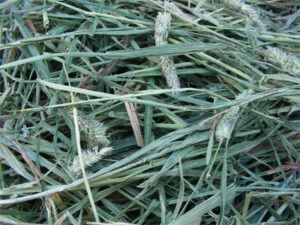
Orchardgrass
Type: Grass hay
Pros: Soft texture, pleasant aroma, high fiber, consistent quality
Cons: Slightly lower protein, can be pricier
Best for: Older horses or those with sensitive digestion
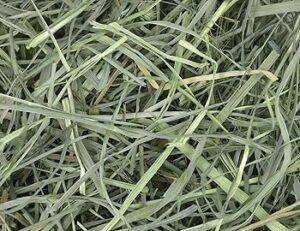
Meadow Hay
Type: Mixed natural grasses and herbs
Pros: Diverse nutrition, supports digestion, high fiber
Cons: Variable nutrient content, inconsistent quality
Best for: Easy keepers or animals needing variety in their diet
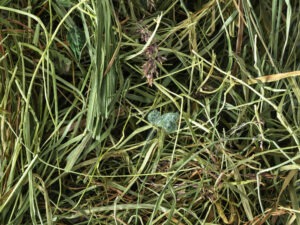
Bermuda
Type: Warm-season grass hay
Pros: Low calorie, high fiber, low sugar
Cons: Lower protein, less available in cooler climates
Best for: Animals with metabolic issues or needing weight management
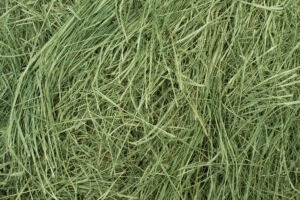
Teff
Type: Fine, soft grass hay
Pros: High fiber, low sugar, dust-free, easy to chew
Cons: Can be expensive or hard to find
Best for: Horses requiring a low-sugar, high-fiber diet
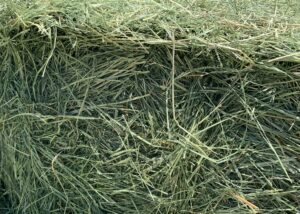
Coastal Bermuda
Type: Warm-season grass
Pros: High fiber, low calories, easily available in coastal regions
Cons: Low protein, limited availability in northern climates
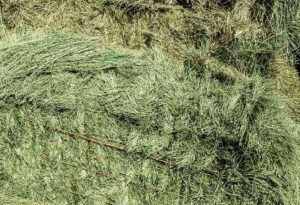
Oat Hay
Type: Cereal grain hay
Pros: Excellent for young livestock if cut at bloom, palatable and energy-rich
Cons: Risk of nitrate toxicity if harvested after drought recovery
Best for: Stock cows or growing livestock
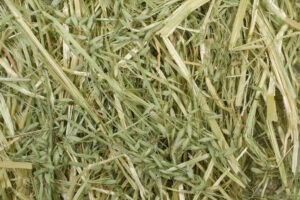
Alfalfa
Type: Legume hay
Pros: High protein, calcium, energy, and palatability, supports growth and lactation
Cons: Can cause bloat or urinary issues if overfed, too rich for some animals
Best for: Dairy cows, kids, lambs, lactating or growing animals
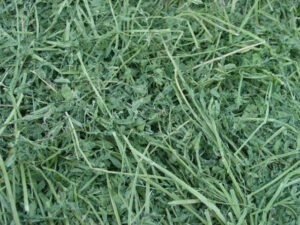
Alfalfa Timothy
Type: Blend of grass and legume
Pros: Balanced protein and fiber, versatile for many species
Cons: Too rich for easy keepers or adult animals with low protein needs
Best for: Young, growing, or performance animals
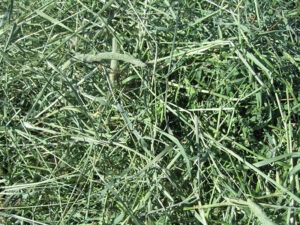
Selecting the right hay means balancing nutrition, fiber, and digestibility for your specific livestock. Evaluate hay not just by species type, but also by cutting maturity, leaf-to-stem ratio, texture, and smell.
A good rule of thumb:
- Leafy and soft for young or lactating animals.
- Coarser and stemmier for adults in maintenance.
- Always introduce new hay types gradually to prevent any digestive upset.
At Kaniksu Feeds, we believe that great nutrition starts with knowledge. Understanding your hay options helps ensure your livestock stay healthy, productive, and thriving year-round.
